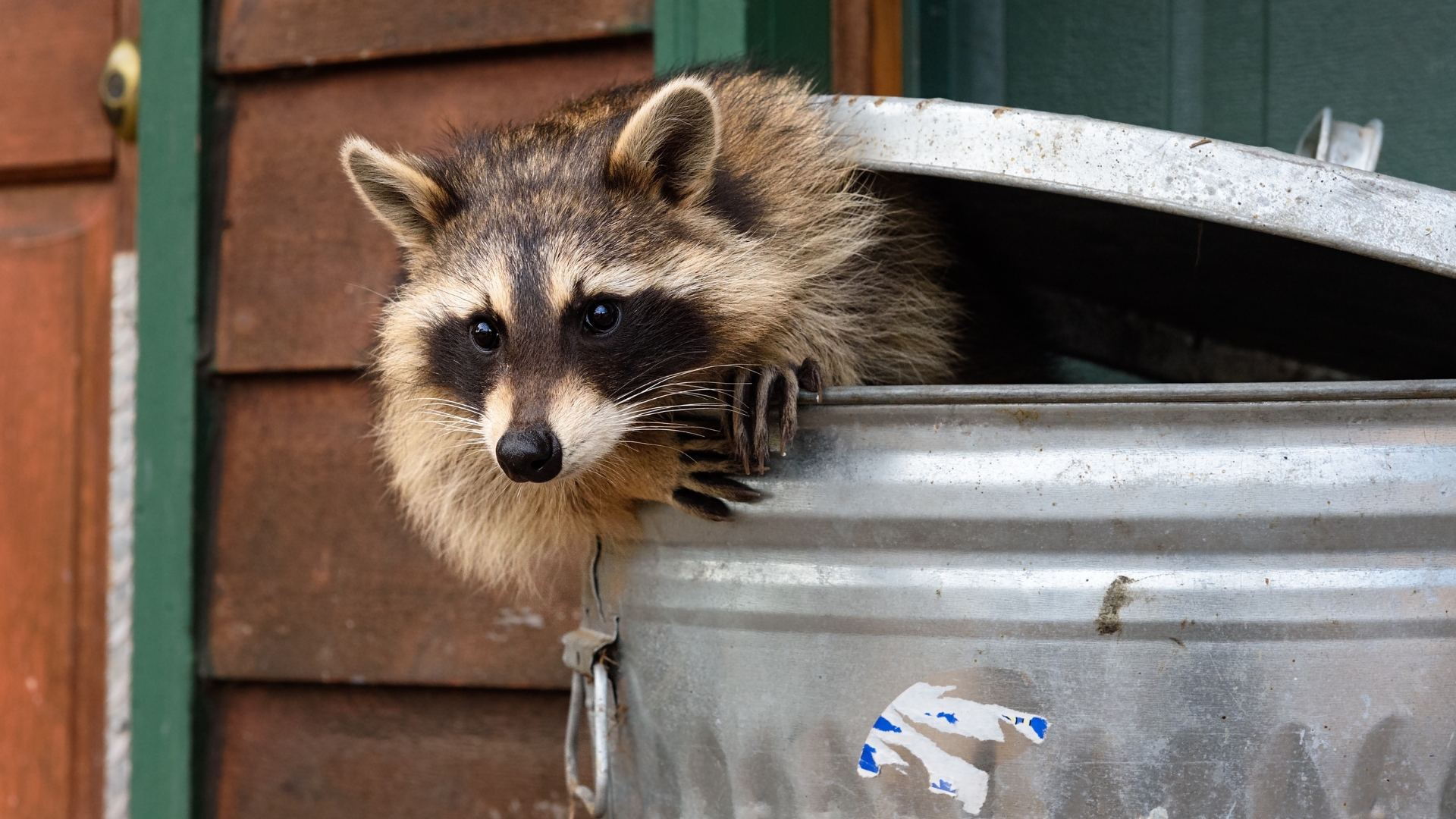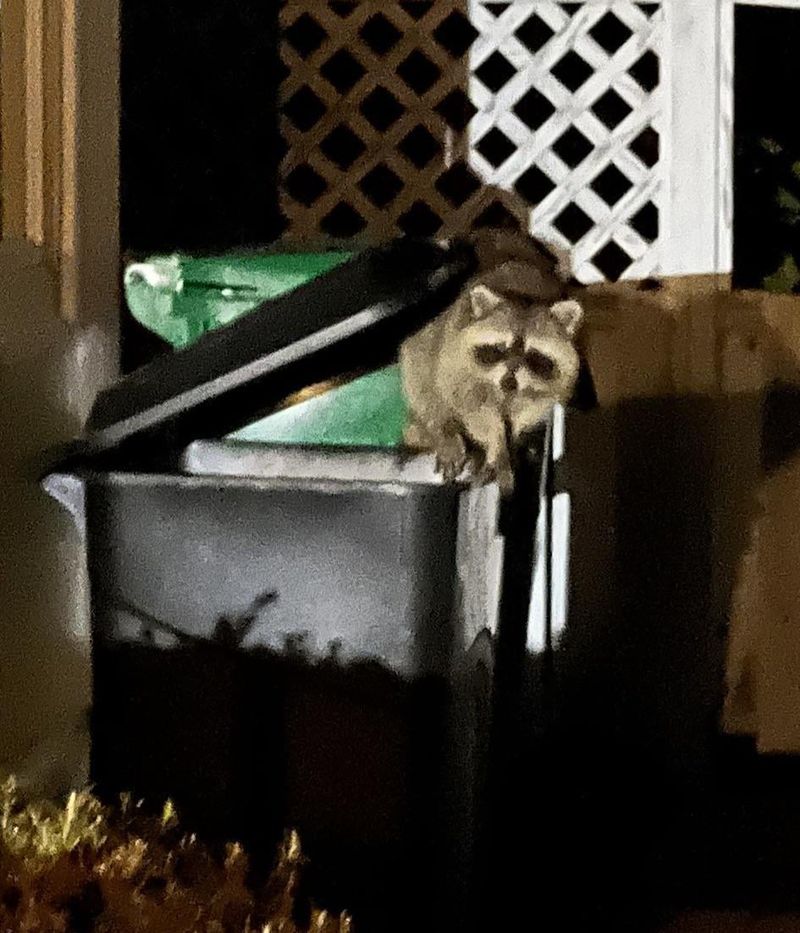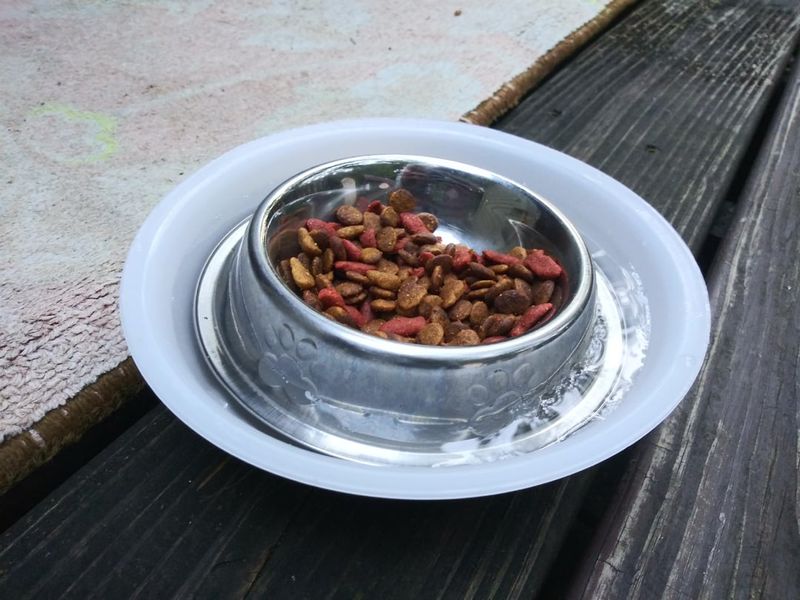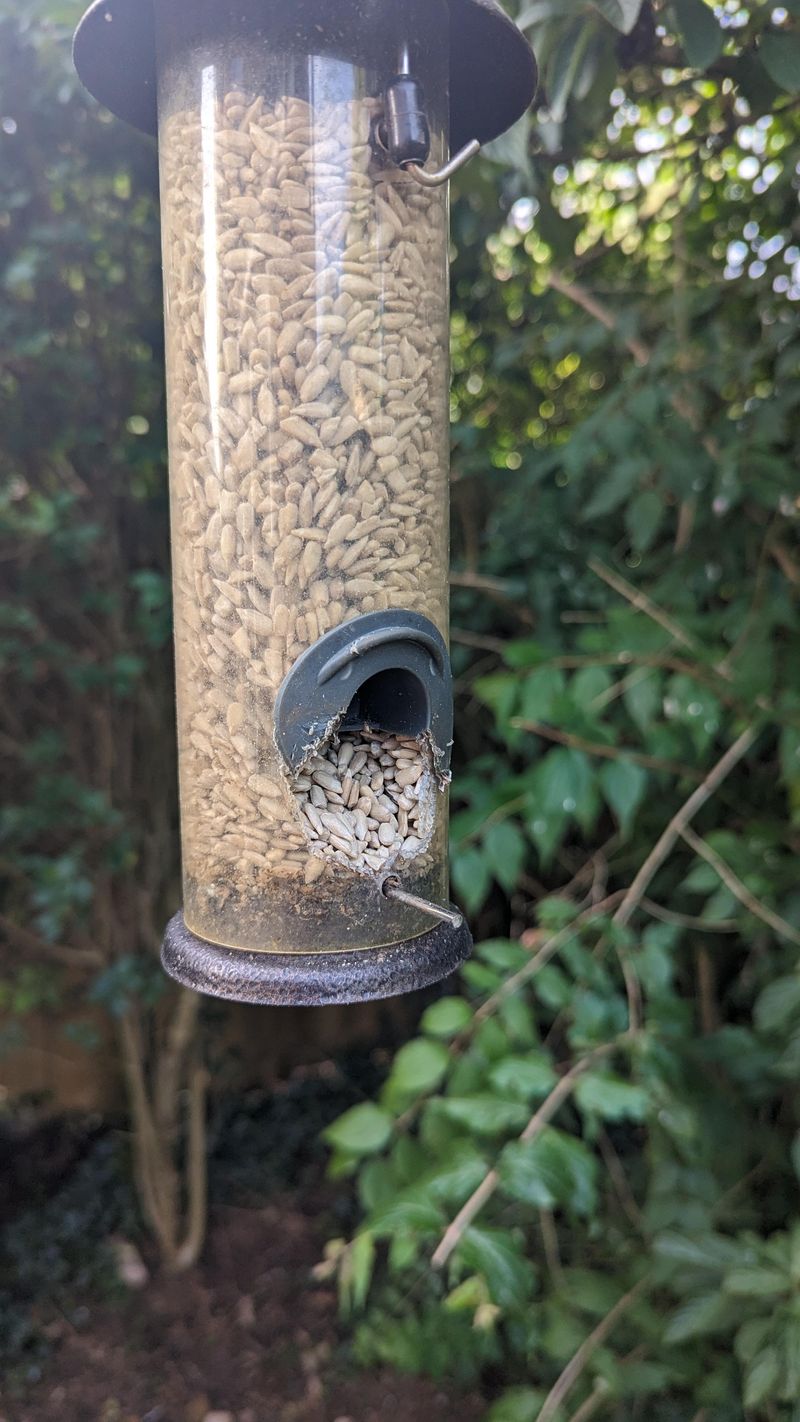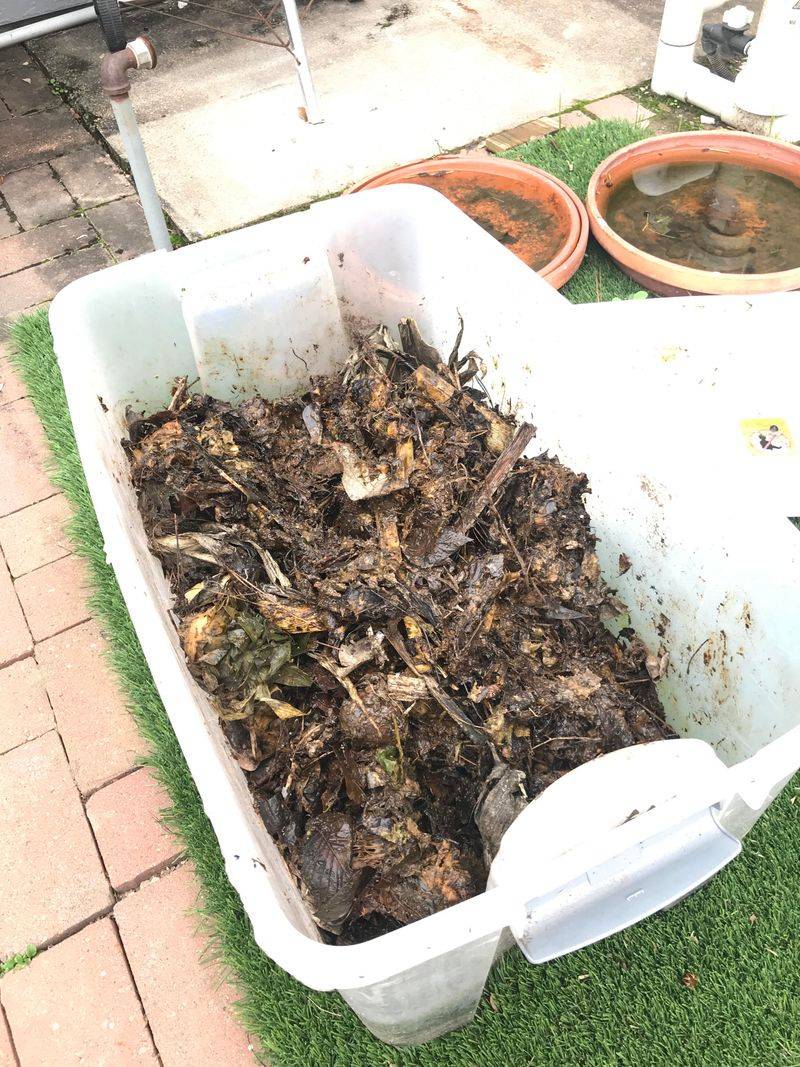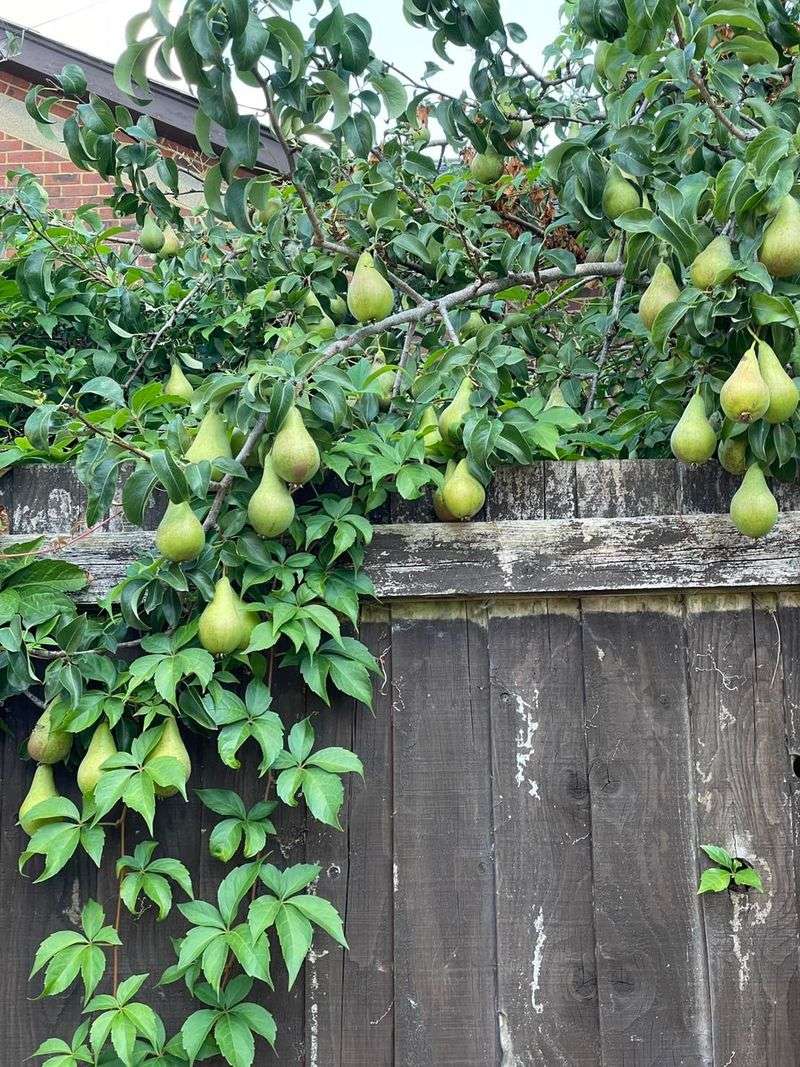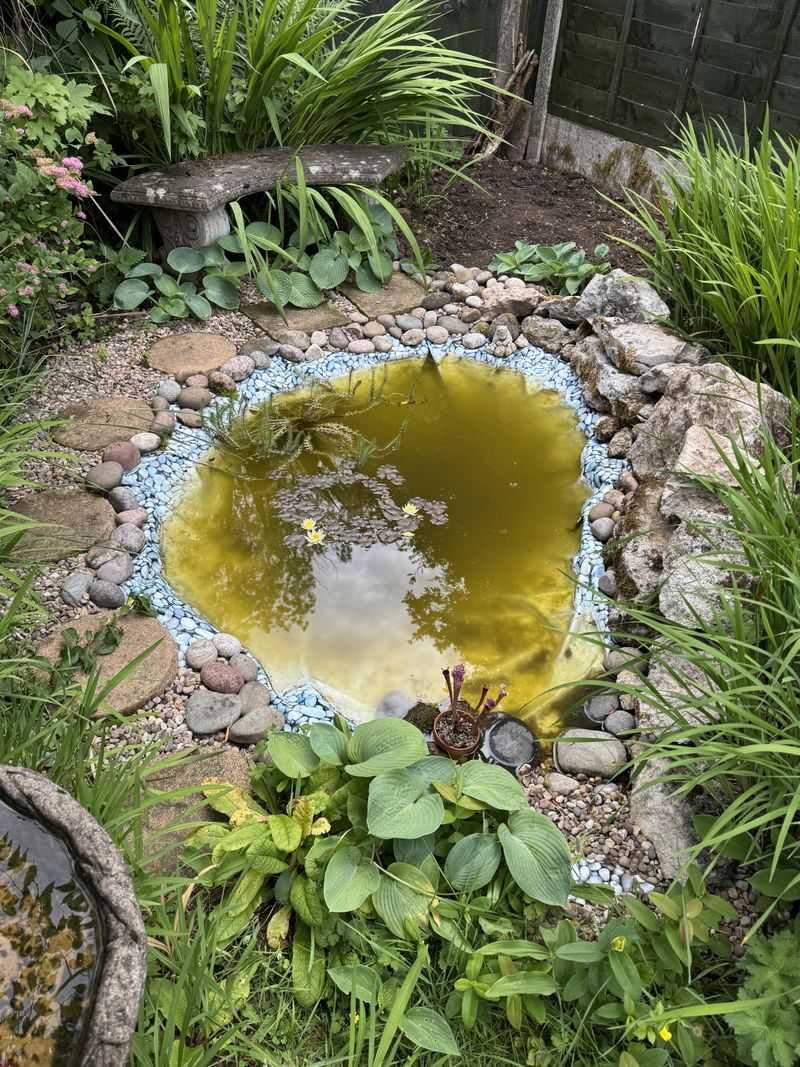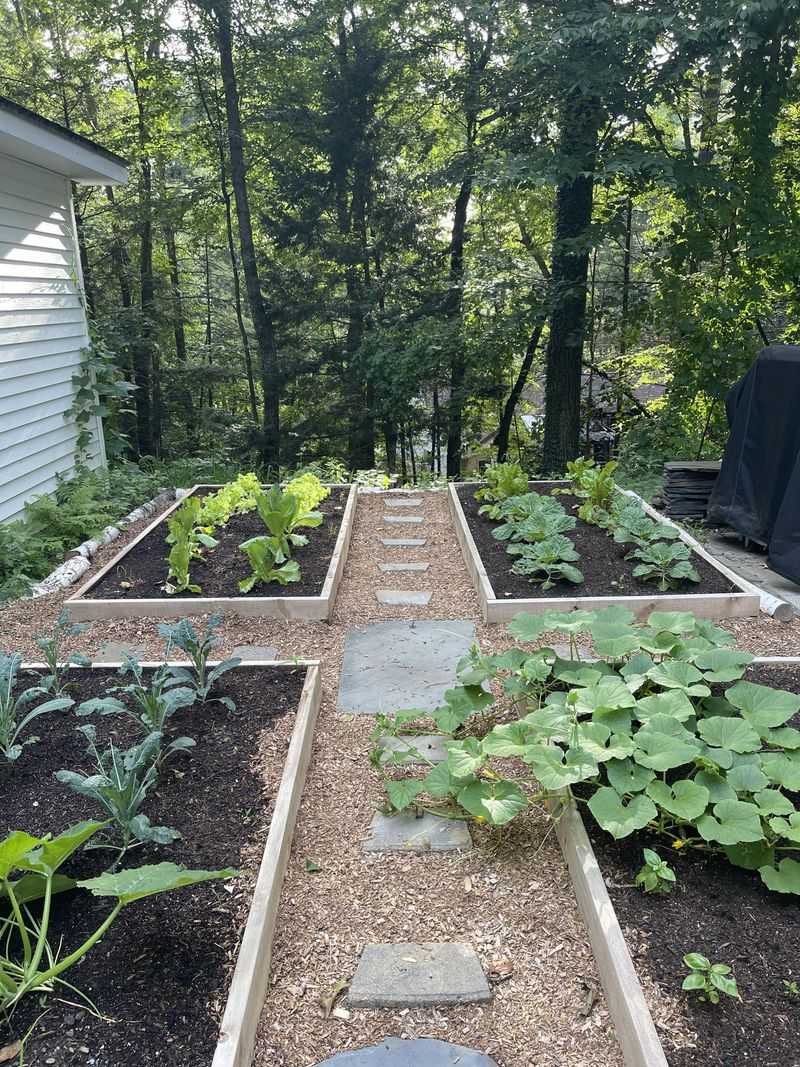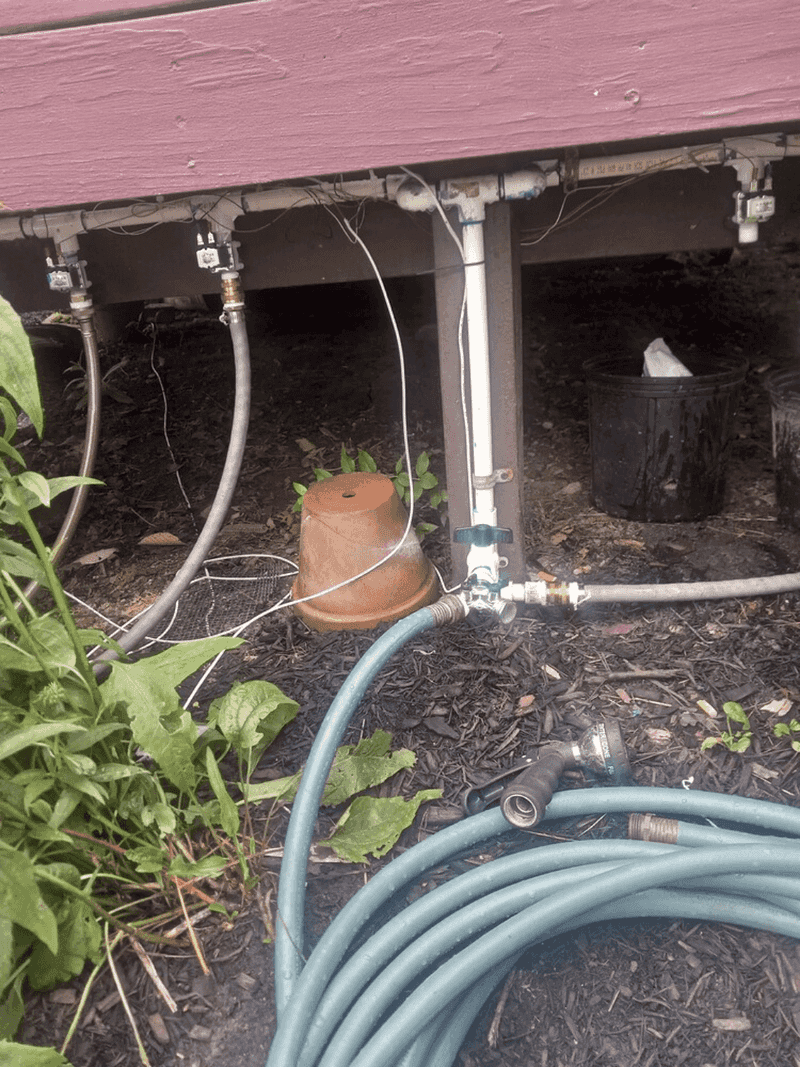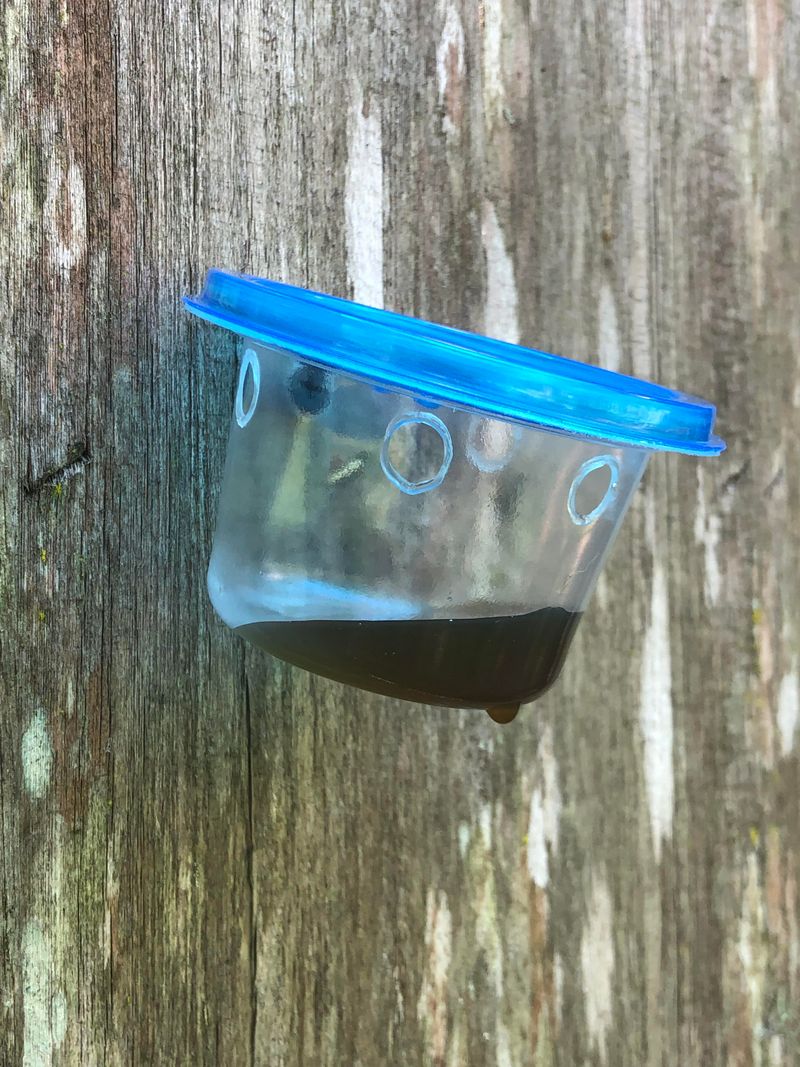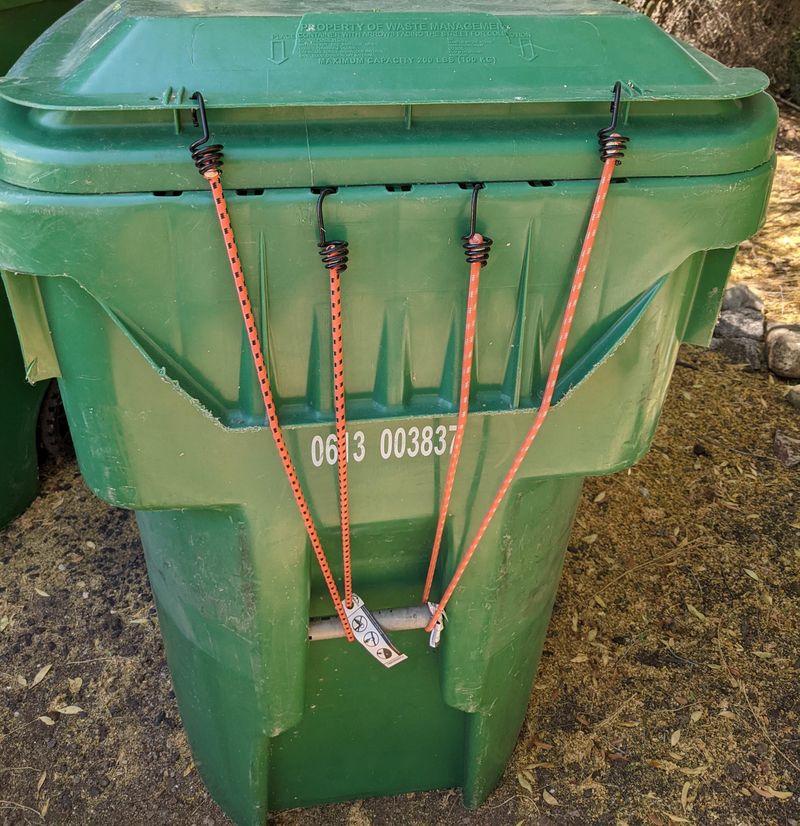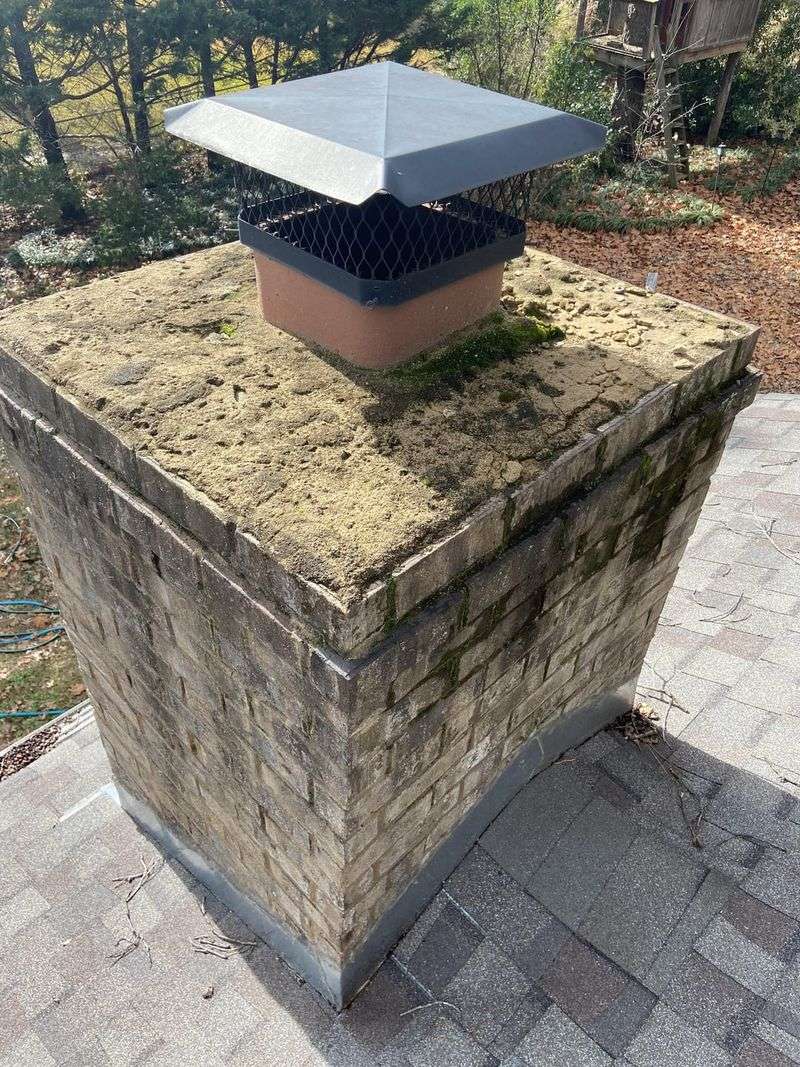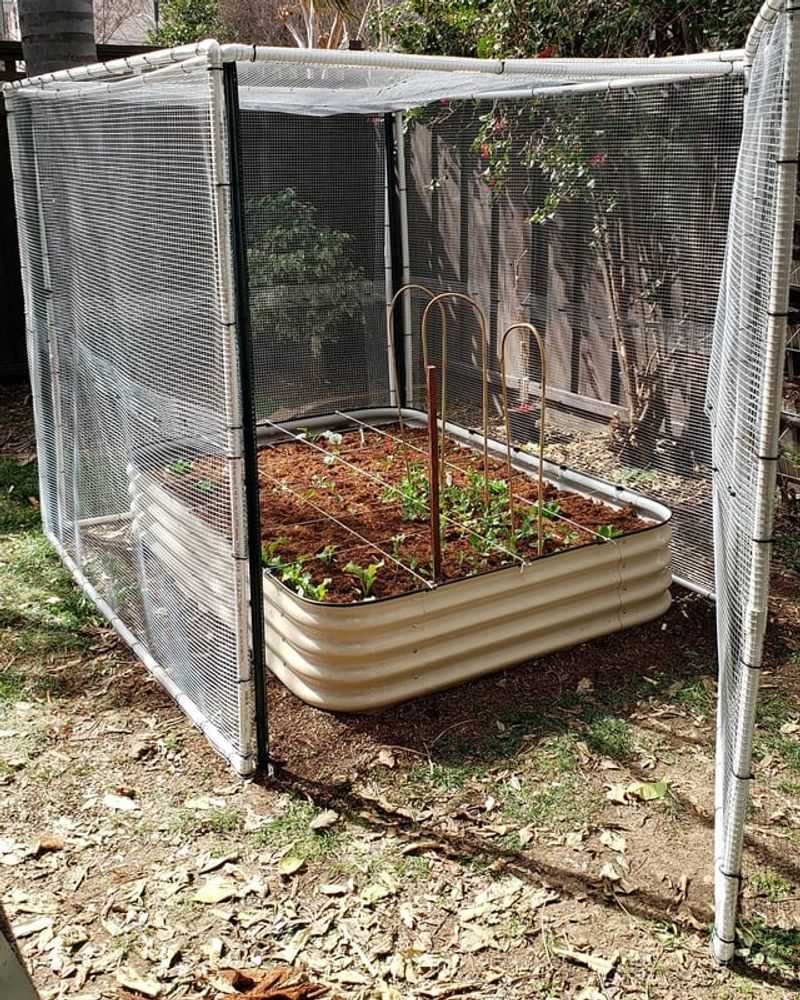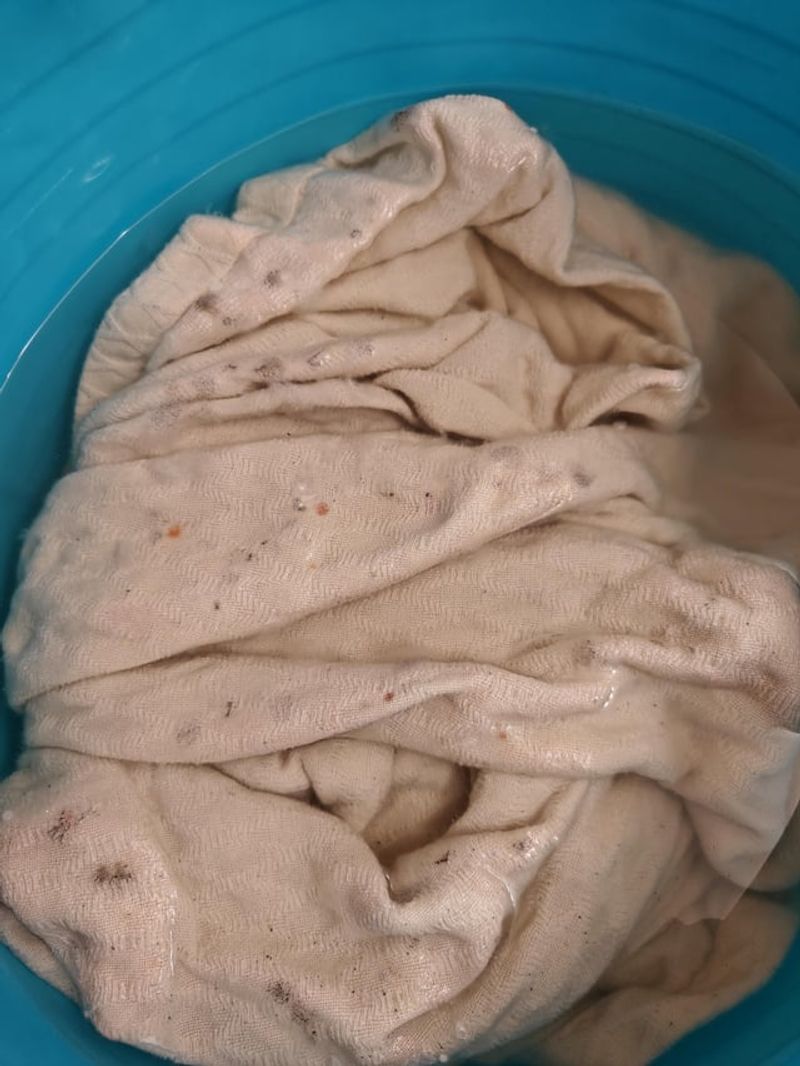Raccoons are clever, curious, and always on the lookout for an easy meal—or a cozy spot to crash. I didn’t realize how many things I was accidentally leaving out that were basically rolling out the red carpet for them.
These 8 common items are raccoon magnets, and once they catch on, they’re tough to get rid of. I’ve learned a few tricks to keep them from turning my yard into their playground.
If you’re dealing with unexpected nighttime visitors, this list will help you send them packing.
1. Uncovered Trash Cans
Raccoons have incredibly dexterous paws that can pry open lids and rummage through garbage with surprising skill. Your weekly trash collection becomes their nightly buffet, providing a feast of leftovers and food scraps.
Once raccoons discover this reliable food source, they’ll return night after night, creating messes and potentially spreading diseases. Even small amounts of food residue can attract these persistent creatures from surprising distances.
2. Pet Food Bowls
Leaving Fido’s dinner outside overnight is practically sending raccoons an engraved dinner invitation. The high protein content in dog and cat food is particularly enticing to these opportunistic omnivores who can smell it from far away.
Many homeowners don’t realize that even empty bowls with residual food scent can attract raccoons. These clever creatures will remember your yard as a reliable feeding spot and make it part of their regular foraging route.
3. Bird Feeders
Those charming bird feeders bringing songbirds to your yard are also ringing the dinner bell for raccoons. Seeds, nuts, and suet are calorie-dense foods that raccoons find irresistible, especially during lean seasons when natural food is scarce.
Raccoons are excellent climbers and will scale poles, trees, or porch railings to reach these suspended treats. The scattered seeds beneath feeders create an additional attraction, drawing raccoons to your yard night after night.
4. Compost Piles
Your eco-friendly compost heap is a raccoon’s idea of an all-you-can-eat buffet. Food scraps, especially fruits, vegetables, and eggshells, emit odors that travel far and signal an easy meal to hungry raccoons prowling the neighborhood.
Unprotected compost attracts not just raccoons but creates a feeding chain – raccoons come for the scraps, predators come for the raccoons. This unwanted wildlife cycle can quickly turn your sustainable garden practice into a neighborhood nuisance.
5. Fruit Trees
Those beautiful apple, pear, or plum trees in your yard are sending aromatic signals to every raccoon in the neighborhood. Fallen fruit fermenting on the ground is particularly attractive, offering raccoons both sugar and the slight alcohol content they seem to enjoy.
Raccoons will return nightly during fruiting season, sometimes even climbing trees to harvest fruit before it falls. The sticky residue and half-eaten fruit they leave behind can attract insects and create additional pest problems.
6. Unsecured Garden Ponds
Your tranquil water feature is a raccoon’s favorite spa and snack bar combined. These animals are naturally drawn to water sources for drinking and washing food – a behavior that gives them their scientific name, Procyon lotor, literally “washing bear.”
Garden ponds with fish are particularly vulnerable, as raccoons will happily help themselves to your expensive koi or goldfish. The shallow edges of decorative ponds provide perfect access points for raccoons to reach in and grab an easy meal.
7. Accessible Shelter Spaces
Uncovered boat storage, wood piles, and garden sheds provide perfect raccoon condominiums. These sheltered spaces offer protection from predators and weather, making them ideal spots for raccoons to nest, especially mother raccoons looking for safe places to raise their young.
Raccoons don’t need much space to squeeze in – they can flatten their bodies to fit through openings as small as four inches wide. Once they’ve established a den, removing them becomes significantly more challenging and potentially dangerous.
8. Vegetable Gardens
Your prized tomatoes and sweet corn represent a gourmet meal for local raccoons. These intelligent creatures seem to know exactly when produce ripens and will make nightly raids, often taking just one bite from each fruit or vegetable, maximizing destruction while sampling everything available.
Raccoons particularly favor sweet corn, melons, and berries – crops that emit strong aromas when ripe. The frustration of finding your nearly-ready harvest destroyed overnight is a common gardener’s complaint in raccoon-prone areas.
9. Install Motion-Activated Sprinklers
Raccoons hate unexpected showers! Motion-activated sprinklers deliver a harmless but startling burst of water when triggered by movement. This humane deterrent teaches raccoons your yard isn’t worth the hassle without causing any harm.
The sudden spray of water combined with the sprinkler’s noise creates a multi-sensory deterrent that raccoons quickly learn to avoid. Position these devices near common entry points or around particularly attractive areas like gardens or ponds.
10. Apply Predator Urine
Leveraging raccoons’ natural fear of predators can keep them at bay. Commercial predator urine products (typically containing fox or coyote urine) create the illusion that dangerous predators are patrolling your property, making raccoons too nervous to stick around.
Apply these scent deterrents around the perimeter of your yard and near attractive features. Remember that rain will wash away these scents, so reapplication is necessary after wet weather to maintain the protective barrier.
11. Secure Trash Cans With Bungee Cords
Simple bungee cords stretched across your trash can lids create an effective raccoon-proof barrier. These flexible fasteners make it nearly impossible for raccoons to pry open lids while still allowing you to easily remove them on collection day.
Cross the bungees in an X pattern for maximum security against these clever bandits. Some homeowners also place heavy objects like bricks on top of lids for extra protection, though determined raccoons can sometimes push these off.
12. Install Chimney Caps
Uncapped chimneys practically invite raccoons to move in. These cozy, protected spaces make perfect raccoon dens, especially for mothers with babies. A quality chimney cap with mesh sides prevents entry while still allowing smoke to escape.
Professional installation ensures there are no gaps around the cap that clever raccoons might exploit. This one-time investment protects your home from potential damage, unpleasant odors, and the significant expense of professional wildlife removal.
13. Use Ultrasonic Repellers
Modern technology offers a hands-off solution with ultrasonic repellers. These devices emit high-frequency sounds that irritate raccoons but are inaudible to humans. Solar-powered models provide continuous protection without running up your electric bill.
Position multiple units around your property for comprehensive coverage, especially near known entry points or attractive areas. While not 100% effective against all raccoons, these devices often reduce activity significantly when used as part of a broader deterrent strategy.
14. Create Barriers With Hardware Cloth
Heavy-duty hardware cloth (metal mesh with ¼-inch openings) creates impenetrable barriers that raccoons can’t chew through or pull apart. Use it to protect garden beds, secure the underside of decks, or reinforce weak points around your home’s foundation.
Bury the mesh several inches deep to prevent digging underneath. The initial installation requires effort, but this long-lasting solution provides years of protection against not just raccoons but other digging pests as well.
15. Try Vinegar-Soaked Rags
Raccoons have sensitive noses and strongly dislike the sharp smell of vinegar. Rags soaked in white vinegar and placed in strategic locations create olfactory barriers that discourage raccoon exploration without using harmful chemicals.
Refresh these vinegar stations every few days to maintain their effectiveness. This method works particularly well in enclosed spaces like sheds or attics where the scent concentrates and lingers longer, creating an unwelcoming environment for potential raccoon tenants.

